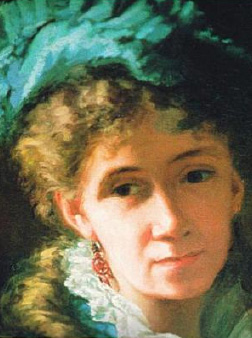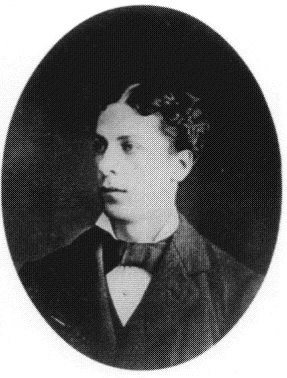I am pleased to present this guest post by Lisa Francesca who is currently researching Carlotta Norton Smith, an art editor in New York’s Gilded Age.
 May Alcott Nieriker’s guide, Studying Art Abroad: And How to Do It Cheaply (Roberts Brothers, 1879), reads like a confidential chat over tea with a wise and experienced friend. Her generous invitation is specific: “For I am supposing our particular artist to be no gay tourist, doing Europe according to guide books, with perhaps a few lessons . . . but a thoroughly earnest worker, a lady, and poor, like so many of the profession . . .”
May Alcott Nieriker’s guide, Studying Art Abroad: And How to Do It Cheaply (Roberts Brothers, 1879), reads like a confidential chat over tea with a wise and experienced friend. Her generous invitation is specific: “For I am supposing our particular artist to be no gay tourist, doing Europe according to guide books, with perhaps a few lessons . . . but a thoroughly earnest worker, a lady, and poor, like so many of the profession . . .”
The guide comprises enchanting scenery and practicality: “I say old underclothes, because the grime of London and the acid used by all Parisian blanchisseuses soon rot and spoil anything delicate or nicely trimmed, and as the old things become too thin for use, but invaluable as paint rags (which artists so often have to buy), they are easily replaced . . .”
May gives us inside information, advising us to board “at the baker’s for an absurdly low price, instead of following all the world to the ‘Warwick Arms.’” Shops are named with addresses and notes: “Ponnel, 4 Quai des Orfevres. (For cheap colors and materials).” With guidance like this, what artist with enough for a steamer passage wouldn’t go?

May wrote the guidebook only a year after her happy marriage to young Ernest Nieriker, and her happiness infuses the book, making it a compelling read. I recently read Studying Art Abroad with enjoyment, then ran across two editorials in the Art Interchange magazine – comments in 1897 that addressed the American art students still streaming across the Atlantic in response to May’s vigorous invitation eighteen years earlier.
I wonder about the delicate economy of scale, the effects of American students upon those shops in London, Paris and Rome. Did May get acknowledgment and acceptance from each of the vendors she listed? Were they prepared for a trickle, stream, and then waves of American art students? I wish I knew how many editions and copies sold of Studying Art Abroad, and the 1879 economics of Paris art ateliers and clothing stores contrasted with those in 1897.

The Art Interchange magazine (1878–1904) was one of several publications founded to fill America’s growing demand for art scholarship since the Centennial Exposition of 1876. Focusing on home decoration and the decorative arts, Art Interchange allowed both urban and rural readers to paint flowers on china, copy a kitten or an Italian shepherdess on canvas, artfully rearrange their libraries and sitting rooms, converse on international art, and catch up on exhibits in New York, Philadelphia and Chicago.

The Art Interchange was opinionated. “The Mistakes of the American Student in Paris,” a lengthy editorial in March 1897, begins, “Paris is the Mecca of every art student in this country . . . But of all the hundreds that go to Paris every year, how many do anything worth looking at on their return?” The editors recite “good and sufficient reasons for [student] failure” starting with American ignorance of the French language, adding “I have seen a student smile sweetly at a professor who told her that her work looked like a subject from the morgue in the last stages of decomposition. Another was told that the head of her man looked like a feather duster.”
Another failure arose in flocking to whichever art teacher was in vogue, and staying too long in that atelier instead of getting a studio and trying to find one’s own artistic voice. The editors quote the painter Whistler: ‘You all work too hard. Why not have a good time! Go for a walk in the Luxembourg, or among the quays, and look at nature; then go to the Louvre and get your mind filled with some of the fine pictures there, and then come back and paint for a couple of hours.’”

The editors scold students who arrive in Paris “with the idea that everything is ‘so cheap,’ and that they can live on about $300 a year. They soon find their mistake, and so they economize on food . . . girls take a tiny, uncomfortable, unheated room, and then try to exist on tea and toast. Of course in a short time they are physical wrecks and unable to do anything . . . It requires as much strength to paint well as to plow.”
In November’s issue that year, in a monthly section called “The Observer,” we find a brief and decidedly stronger comment: “It is seldom now that anyone who knows both our own and the foreign schools through actual experience will recommend a sojourn abroad for preparatory study. All agree that the methods of teaching on this side are more systematic and better, and that the student should not go over there until he has so firmly established his footing as not to be easily upset by the strange fads and peculiar phases of Paris or Munich . . .”
The editors caution, “The more sensitive an artist is to outside influences, the greater the necessity that his environment be rational and clean and wholesome . . . Today Bohemia, deserted by the rare spirits, is inhabited by a class that excites the suspicion and demands the espionage of the police . . . No more pretentious money-making humbug was ever sprung upon the public than the ‘Chat Noir’ with its bohemians, singers and artists, hired to frequent the place . . . the same is true of the ‘Moulin Rouge’. . . Let it be understood once for all that the only true Bohemia is in our dreams . . .”
 Clearly, the editors (and their advertisers) wanted Americans to stay home and study from American sources. Was this the beginning of the slowdown of May’s guidebook sales? Even if it were — to this writer, eighteen years is an awfully good run.
Clearly, the editors (and their advertisers) wanted Americans to stay home and study from American sources. Was this the beginning of the slowdown of May’s guidebook sales? Even if it were — to this writer, eighteen years is an awfully good run.
Links
Studying Art Abroad: And How to Do It Cheaply
The Art Interchange March 1897 Issue: Full View of vol 38 is missing from Hathi Trust catalogue (I own a paper copy)
The Art Interchange November 1897 Issue (Look for “The Observer,” #156, p110)
Winslow Homer, Art-Students and Copyists in the Louvre Gallery, Paris
Bibliography
Nieriker, May Alcott, Studying Art Abroad: And How to Do It Cheaply. Boston, Roberts Brothers, 1879.
The Art Interchange (vols 37-39, 1896-97)
Author Bio
Lisa Francesca is the author of The Wedding Officiant’s Guide: How to Write and Conduct a Perfect Ceremony and Helen and The Masters: A Portrait of a California Mystic. Her essays have appeared in AboutPlace Journal and Catamaran Literary Reader. She’s reading back issues of the Art Interchange as she researches Carlotta Norton Smith, an art editor in New York’s Gilded Age who authored The Homemaker: Her Science, With a Treatise on Etiquette. (www.lisafrancesca.com)
 Interested in learning more about May Alcott Nieriker? Read The Forgotten Alcott: Essays on the Artistic Legacy and Literary Life of May Alcott Nieriker, edited By Azelina Flint and Lauren Hehmeyer. A more affordable ebook version is available. Essayists include Jan Turnquist, John Matteson, Daniel Shealy and many others (including me!).
Interested in learning more about May Alcott Nieriker? Read The Forgotten Alcott: Essays on the Artistic Legacy and Literary Life of May Alcott Nieriker, edited By Azelina Flint and Lauren Hehmeyer. A more affordable ebook version is available. Essayists include Jan Turnquist, John Matteson, Daniel Shealy and many others (including me!).
 Are you passionate about
Are you passionate about
Louisa May Alcott too?
Subscribe to the email list and
never miss a post!
Facebook • Instagram • Twitter





Thank you for this very interesting blog post, and for providing additional context for May’s important (and yes, very readable) guidebook! In response to a couple of your questions: to my knowledge only one edition of the guidebook was ever published, and some 1,008 copies were printed by Roberts Bros. If further interested, I have a fairly long section on SAA in my recent book, May Alcott Nieriker, Author and Advocate (Anthem Press, 2022).
Thanks, great information! I alerted Lisa to your comment.
Thank you so much, Julia, for sharing the numbers about May’s book. Those 1,008 copies had a huge impact! I will find your book and read with pleasure.